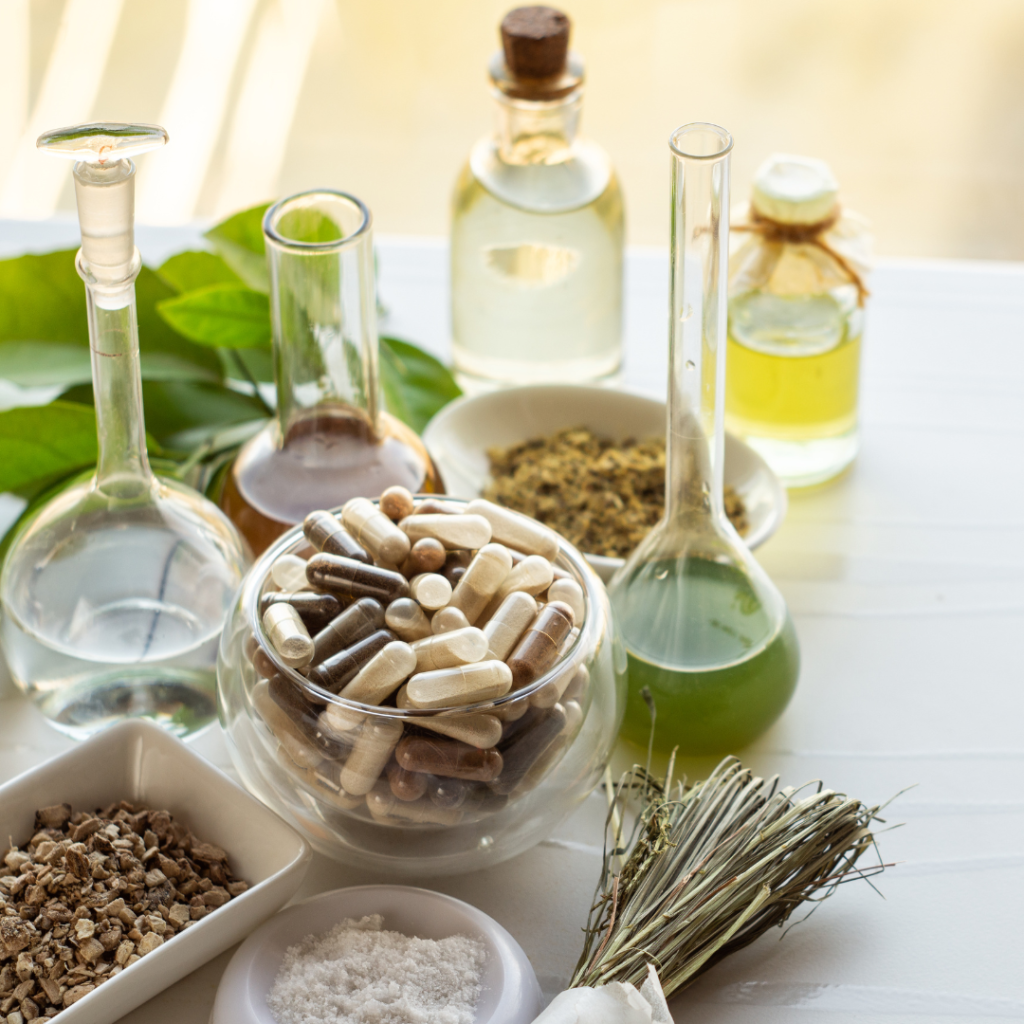Inflammation gets talked about a lot when it comes to health – but what exactly does it mean? Is any inflammation dangerous or does your body need some? How much is too much? Let’s clear up the confusion and delve into what inflammation is, how it impacts your body, what causes it to get out of control, and most importantly – how to reduce it for optimal wellness.
Acute Inflammation: A Necessary Immune Response
Inflammation itself is not inherently bad – in fact, it’s a normal and healthy immune system response. Your body initiates an acute inflammatory response upon injury, infection, or encountering irritants. This acts to remove harm, prevent the spreading of infection, and initiate healing.
More specifically, inflammation is your body’s coordinated reaction to harmful stimuli involving:
● Increased blood flow to the affected area
● Heightened permeability of blood vessels
● Activation of immune cells like mast cells and leukocytes
● Release of proteins and fluids including histamine and cytokines
Together, these normal inflammatory mechanisms yield the signs we’re familiar with – redness, swelling, heat, pain, and loss of function.
For example, twisting the ankle triggers localized swelling, warmth, redness, and pain as your body rushes nutrients, immune cells, and fluids to the area to contain damage and heal. Similarly, when a virus infects your respiratory tract, inflammation flares to destroy the germs and prevent their spread deeper into the lungs. The sore throat and phlegm produced are products of this acute inflammatory response.
While uncomfortable, this short-term inflammation is protective and an inevitable part of the healing process. However, problems emerge when inflammation is prolonged and misdirected.
Chronic Inflammation: When Inflammatory Signals Go Awry
Chronic inflammation occurs when the inflammatory process fails to “turn off” once a threat is eliminated. The immune system remains active long-term, setting up a constant state of heightened inflammation throughout the body.
This persistent, low-grade inflammation chips away at tissues over time. It creates an underlying environment conducive to many serious diseases including:
● Atherosclerosis and heart disease
● Type 2 diabetes
● Autoimmune disorders like lupus and rheumatoid arthritis
● Neurodegenerative diseases like Alzheimer’s
● Certain cancers like colon, prostate, and breast cancer
Chronic inflammation may arise in a few key ways:
- Unresolved Acute Inflammation – An acute inflammatory response to injury or infection lingers, failing to resolve completely. Damaged tissues continue triggering immune activity.
- Autoimmune Disease – The immune system gets confused and attacks the body’s own healthy tissues, sustaining needless inflammation. About 5-10% of the population has an autoimmune condition.
- Lifestyle Factors – As outlined below, certain modern lifestyle habits provoke inflammatory pathways in the absence of any trauma, infection, or autoimmunity. This creates unhealthy chronic inflammation.
While genes influence immune function, chronic inflammation often arises from controllable lifestyle factors. Let’s explore these further.
Dietary Causes of Chronic Inflammation
Certain dietary choices promote inflammation, especially the modern pro-inflammatory Western diet abundant in:
● Added sugars – Found in sodas, candy, desserts, and excess carbohydrate consumption.
● Refined grains – Highly processed bread, pasta, cereals, etc. with refined
carbohydrates.
● Vegetable and seed oils – Soybean, corn, cottonseed, sunflower, and safflower oils are high in inflammatory omega-6 fats.
● Processed and red meats – Hamburgers, hot dogs, bacon, and deli meats.
● Chemical additives – Preservatives, colors, flavors, sweeteners.
● Fried foods – French fries, fried chicken, doughnuts, etc.
● Alcohol – Especially in excess.
Meanwhile, this diet often lacks anti-inflammatory foods like:
● Fruits and vegetables – Rich in antioxidants and polyphenols.
● Oily fish – Salmon, mackerel, anchovies, sardines contain omega-3s.
● Whole grains – Brown rice, barley, oats, buckwheat, etc.
● Herbs and spices – Turmeric, ginger, garlic, rosemary, green tea.
● Healthy fats – Olive oil, avocados, nuts and seeds.
Lopsided Omega-6: Omega-3 Ratios – Many Western diets provide excessive omega-6 fatty acids from oils like soybean and corn while lacking omega-3s from fish, flax, and chia. This imbalanced ratio fuels the flames.
- Nutritional Deficiencies – Diets lacking nutrients like vitamin C, vitamin D, zinc, and magnesium contribute to unchecked inflammation.
- Dehydration – Inadequate hydration allows metabolic waste to accumulate, stimulating inflammatory pathways.
- Food Sensitivities – Gluten, dairy, shellfish, peanuts, and other allergens provoke immune responses in sensitive people.
The Standard American Diet sets the stage for chronic inflammation whereas anti-inflammatory nutrition helps restore balance.
Lifestyle Factors That Sustain Chronic Inflammation
Beyond diet, other aspects of modern life promote inflammation:
- Physical Inactivity – Lack of regular exercise causes fat gain and heightened inflammatory markers. Activity is anti-inflammatory.
- Sleep Deprivation – Skimping on quality sleep disturbs inflammatory signaling. Aim for 7-9 hours nightly.
- High Stress Levels – Chronic stress hormones like cortisol and adrenaline ignite inflammatory genes.
- Obesity – Excess visceral fat secretes molecules that trigger widespread inflammation.
- Smoking Cigarettes – The toxins in cigarette smoke directly irritate tissues, sustaining inflammation.
- Environmental Pollutants – Smog, industrial chemicals, pesticides, and heavy metals tax the body’s detoxification systems.
- Infections – Bacterial, viral and parasitic infections fuel excessive immune system responses.
- Periodontal Disease – Chronic dental/gum infections release bacteria into the bloodstream, provoking inflammation.
- Leaky Gut Syndrome – Intestinal permeability allows endotoxins and undigested proteins into circulation, inciting immune reactions.
As you can see, inflammation depends heavily on modifiable lifestyle factors. Adjusting these habits accordingly helps reverse this hidden driver of disease.
Signs Your Body Is Stuck in Chronic Inflammation
Symptoms related to acute inflammation like joint pain, throat pain, or flu aches tend to come and go. But chronic inflammation can fester silently for years. Here are some clues it may be brewing:
● Constant low-grade joint pain or stiffness
● Unexplained fatigue, brain fog, or mood changes
● Slow healing of wounds and injuries
● Skin conditions like eczema, psoriasis, or acne
● Digestive issues like reflux, IBS, ulcerative colitis
● Weight gain and difficulty losing weight
● High blood glucose and insulin resistance
● Anxiety, depression and sleep disturbances
● Autoimmune disorders like Hashimoto’s or rheumatoid arthritis
Testing can also reveal elevated inflammatory markers in the blood like C-reactive protein (CRP), interleukin-6 (IL-6), fibrinogen, and homocysteine. Consult your physician if inflammation or autoimmunity is suspected.
Natural Ways to Combat Chronic Inflammation
Pharmaceuticals like NSAIDs or steroids may temporarily relieve inflammatory symptoms, but they can also provoke side effects. Lifestyle measures and natural compounds can bring inflammation into balance more safely.
Anti-Inflammatory Diet:
● Increase fruits, vegetables, omega-3 fats, whole grains, nuts/seeds. Eat the rainbow.
● Limit sugar, refined carbs, alcohol, processed foods, and factory-farmed meat.
● Stay hydrated with 2-3 liters of purified water daily.
● Consider an elimination diet to identify problem foods.
● Supplement with curcumin, omega-3s, and probiotics.
Healthy Lifestyle Habits:
● Exercise 30+ minutes daily – mix cardio and strength training.
● Destress through meditation, yoga, massage, nature.
● Get 7-9 hours of quality sleep nightly.
● Quit smoking and avoid secondhand smoke.
● Maintain healthy body weight.
● Drink green tea and use anti-inflammatory herbs like turmeric, ginger, and garlic.
Natural Anti-Inflammatories:
● Omega-3 fatty acids – Found in fish, chia, flax and supplements.
● Curcumin – Active compound in the turmeric spice.
● Ginger – Contains anti-inflammatory compounds like gingerols.
● CBD oil – Interacts with the body’s endocannabinoid system.
● Tart cherry – Contains powerful antioxidant anthocyanins.
● Green tea – Polyphenol antioxidants called EGCG lower inflammation.
● Resveratrol – Antioxidant found in red wine, berries and peanuts.
● Capsaicin – Hot pepper compound that relieves joint inflammation.
● Omega-3, turmeric, ginger, tart cherry, green tea and resveratrol in particular show
efficacy in clinical inflammation studies. A health professional can advise on proper
anti-inflammatory dosing.
Take Home Message on Inflammation:
Some degree of acute inflammation is necessary and unavoidable. However, modern lifestyles tip the scales towards chronic low-grade inflammation – the gateway to most diseases. Diet, exercise, stress, toxins, and infections foment inflammatory pathways. Thankfully, adopting an anti-inflammatory lifestyle limits immune overactivation before it gets out of control. Lean on whole, unprocessed anti-inflammatory foods and proven natural compounds. Move daily, de-stress, hydrate, and rid your environment of irritants. Getting inflammation into balance helps reduce your risk of diabetes, cardiovascular disease, autoimmunity, dementia, and even cancer.
Don’t accept inflammation as an inevitable part of aging. Instead, make smart diet and lifestyle choices each day to keep this hidden health saboteur in check!






